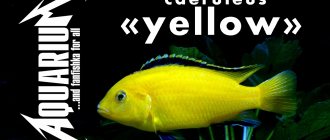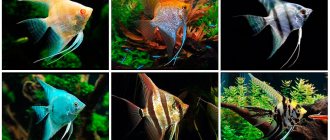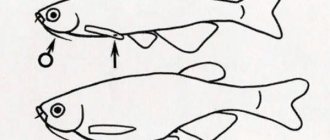Choosing an aquarium
Before determining which aquarium is best, you need to carefully analyze the room space, because the place to put the aquarium is chosen depending on the size and amount of equipment for the tank. Depending on the design, artificial reservoirs are divided into the following types:
- frame;
- corner aquariums with or without a cabinet;
- concave;
- frameless;
- hanging;
- on legs or stands.
Having decided on the design, you need to choose the shape of the tank. A home aquarium can be provided in the following models:
- rectangular container;
- aquarium-sphere;
- jebo aquarium;
- aquarium glass;
- polygonal tank;
- triangular container.
These are the most common forms of reservoirs, but there are designer models of reservoirs: labyrinths, wall aquariums, reservoirs in the form of televisions, sinks and many other different designs. Of course, for beginners in aquarium keeping, it is better to choose a small traditional model for the first aquarium. Also, tanks for keeping fish are classified into freshwater and marine. The latter can contain exotic representatives. It should be borne in mind that starting and maintaining a marine aquarium at home requires certain knowledge.
When purchasing a new aquarium, professionals advise the novice aquarist to follow two rules:
- First, determine a place in the house for the aquarium.
- The size of the reservoir is chosen depending on the number and types of fish.
If aquarium fish have not yet been selected, then the capacity of the reservoir is determined on the basis of 1 cm of phenotype = 1.5 liters of water. It is important that there are sockets near the place for the aquarium. Having decided on the shape and size of the tank, you need to begin selecting accessories and equipment, without which it is impossible to create underwater depths.
If you wish, you can pay attention to making an aquarium with your own hands. However, this will require careful study of the technology and some time to work.
Water
Prepare the water before starting. It settles for at least a day; it should not contain chlorine or other harmful impurities. You will need special water tests and a bacterial culture for the first run. Some types of fish need soft or, conversely, hard water. The liquid is softened by boiling or freezing. Water becomes harder due to stones and shells.
Accessories and equipment
In specialized stores, artificial ponds are sold together with covers or nets intended for attaching equipment. They also protect overly active fish so that the pets do not jump out of the aquarium. Lids are often equipped with lighting fixtures, which is very convenient. It should be noted that the power of the built-in lamps may not be suitable for certain phenotypes, so it is better to immediately clarify all the nuances in the store.
To get fish and plant plants, an aquarium for beginners must be equipped with the following equipment:
- light bulbs;
- heaters;
- thermometer;
- ultraviolet lamp for aquarium;
- filter;
- additional osmosis in the aquarium;
- siphon for aquarium;
- an aerator that supplies oxygen to the aquarium.
This is a list of standard equipment, without which it is impossible to start a reservoir. Additionally, they buy aquarium charcoal, shelves for food, various trinkets, and air stones. Also, various decorations are purchased for the aquarium to decorate the tank: grottoes, shelters, caves, models of sunken ships and boats, pebbles and driftwood.
Scenery
Many people strive to decorate the aquarium with various decorative elements - artificial grottoes, driftwood, beautiful shells, stones, corals, underwater castles, stylized as sunken pirate ships. Decorations can also have the additional function of protecting fry from adults.
Soil and plant selection
When purchasing an aquarium for your home, you should decide on the type of soil and vegetation. For a beginner, it is important to know that ordinary sand or pebbles from a river are not suitable for an artificial pond, because the soil plays an important role - without it it is impossible to breed fish and plant plants. A universal substrate is considered to be rolled fine gravel or basalt soil - this type of substrate softens water. The recommended soil thickness is 4–7 cm, but deviations are possible depending on the types of flora. Don't forget about fertilizers for the aquarium.
Before growing plants, the quantity and type of flora are determined. There should be enough algae to saturate the water with oxygen, but not too much, otherwise the fish will have nowhere to swim. Beginning aquarists choose unpretentious species: elodea, vallisneria plant, cryptocoryne; among floating ones they prefer riccia and duckweed. You can also learn how to make your own herbal tea.
Also, aquarium owners often place Java moss or different types of ferns in the pond. As soon as the soil and plants are selected, they begin to launch the aquarium.
Newbie mistakes
The most common mistakes:
- Small aquarium . This is a common misconception. However, maintaining an ecosystem in a large (100 liter) aquarium is an order of magnitude easier than in a 30 liter one.
- Disabling the filter . The filter must function all the time, without weekends or holidays. It is this device that is responsible for water purification; its inaction can lead to an increase in the concentration of toxic substances.
- Overpopulation of an aquarium , when the volume of the tank is designed for fewer inhabitants than live in it.
- Too much feed . The fish will swim to the feeder every time a person appears to feed them. But this does not mean that they are hungry. You should not give food more than once a day.
Many new discoveries await the beginning aquarist. Be patient and success will certainly come. The main thing is to methodically follow the recommendations of more experienced underwater fauna lovers.
Starting an aquarium
Before you get fish, it is necessary to establish biological balance in the reservoir, because pets are not placed in a new, just launched tank. It is also important to know what kind of water to put in the aquarium.
So, the first start of the aquarium - where to start:
- the reservoir is filled with water, checking the integrity of the seams;
- lay out the soil, plant the plants;
- install decorations and decorations;
- include equipment.
The biological balance is established within a week, and at this time aquarists finally decide on the fish and buy pets. In order for water parameters to normalize, professionals advise diluting conditioners and mineral fertilizers in the water, about which you can separately consult with specialists.
As soon as the biological balance in the tank is normalized, you can introduce the first inhabitants of the reservoir - frogs for the aquarium, mollusks or shrimp. They will tell you if everything is okay with the aquatic environment, and within a week they will stock the fish.
Small inventory
But for normal maintenance of the reservoir you will need some more accessories.
Net
Without this simple device, it will be very problematic to place fish, for example, during spawning.
Glass scraper
Required to remove solid contaminant deposits on the inner surface of the aquarium walls.
Bottom cleaning siphon
Necessary for removing contaminants from the bottom without completely restarting the reservoir.
Feeders
Without these floating circles and rectangles, the food will spread across the entire surface of the water. In addition, it is much easier for fish to pick up food in one place.
Special household chemicals
Special chemicals are used to clean glass, but you need to remember: the “stronger” the product, the more thoroughly it needs to be washed off .
Ideally, the fish are removed from the reservoir into a temporary tank, and after cleaning the aquarium is left with water to remove all possible harmful impurities.
Buying fish
Keeping and caring for fish is a responsible matter, because they are living creatures that require care and attention. Before you get pets, you should decide on the type of inhabitants. It is better for novice aquarists to breed fish that do not have complex contents, namely:
- mollies;
- guppy;
- zebrafish;
- barbs (there are different types, for example, Sumatran barb);
- platies;
- swordtails.
Selection of fish by compatibility
All aquarists face the problem of fish compatibility. When selecting future residents, several factors should be taken into account:
- The fish must match each other in size. Species that are too large and do not even try to eat their smaller counterparts will frighten them and keep them stressed. It is better to keep large fish together with large ones, and small ones with small ones.
- Many fish are territorial - they require a lot of personal space. They fiercely defend their territory and can harm their neighbors. When purchasing such fish, you should accurately calculate their number and size of the aquarium.
- Omnivorous and predatory fish can be kept with other species only if the peaceful individuals are larger in size than them.
- Fish with long, “tasty” fins should not be introduced to species that like to bite tails and fins.
- Energetic fish get along better with equally nimble neighbors , and slow ones with slow ones.
- Water parameters (hardness, chemical composition, temperature, movement) and lighting intensity must be suitable for all inhabitants of the aquarium.
- Relatively compatible fish species get along well if their lives take place at different levels (in different layers of water) of the aquarium.
Goldfish
You should also take into account the characteristics of the species and intraspecific aggression: whether the fish are schooling, harem, or prefer to stay in pairs and live alone.
Based on the totality of all parameters, fish are divided into:
- incompatible with each other (angelfish with African and South American cichlids, gouramis, discus fish, guppies, goldfish);
- relatively compatible (gouramis with discus and guppies);
- compatible (swordtails with zebrafish and cockerels).
It is better to introduce relatively compatible species into the aquarium as fry at the same time. As the juveniles grow up, they have time to get used to each other and subsequently behave less aggressively.
General recommendations
Beginning aquarists who want to delve deeper into setting up an aquarium will benefit from tips and recommendations that include the following steps:
- Professionals recommend a rectangular shape for the reservoir, while the height should be greater than the width and less than the length.
- The artificial pond is placed on a flat surface without depressions, depressions or cracks. The edges of the tank should not protrude beyond the limits, otherwise the container may collapse.
- When choosing the shape of a reservoir, it is better not to buy an aquarium-glass or ball. Curved walls refract light incorrectly, causing the fish to become stressed.
- Compliance with the temperature regime and the required water parameters will help avoid illness and death of pets. You need to learn in advance how to settle water for an aquarium.
- Once you add fish to the aquarium, you need to take care of them. Pets are fed once a day, using a balanced and varied diet. Remains of food are removed from the pond to prevent the risk of harmful algae. You cannot overfeed your pets.
- It is necessary to observe how often the water in the aquarium needs to be changed; the liquid is renewed weekly, replacing 25% of the volume. Clean the aquarium and soil regularly, removing food debris, plaque, organic debris and other dirt. Additionally, you can purchase a test for aquarium water.
- The operation of the filter and aerator is periodically checked for failures.
- The duration of daylight should be no more than 11 hours, otherwise there is a high risk of the appearance of parasitic algae.
- It is advisable to have an illuminated aquarium lid.
By choosing and purchasing everything you need, as well as following the recommendations and rules, you can create a real miracle at home - an aquarium with colorful underwater inhabitants and strange green flora. However, it is important to remember that maintaining an artificial reservoir is a task that requires constant attention and control; therefore, it is better not to place an aquarium for irresponsible people. After all, it’s not enough to just buy a tank and fish, you need to care for and love your pets - and then they will reciprocate.
Rules for aquarists
Recommendations from experienced aquarists help beginners monitor the condition of the reservoir.
Basic Rules:
- It is necessary to observe what the fish look like. They should have a healthy appearance and bright colors.
- Before purchasing a new species, you need to make sure that it is compatible with other inhabitants of the aquarium.
- Do not knock on the walls of the tank to scare the fish.
- Dead fish should be removed without delay.
- Sick individuals must be transplanted into an isolated container.
Basic mistakes
Errors in care can lead to the death of fish and plants.
The main errors include:
- untimely cleaning can cause cloudy water and the growth of parasitic bacteria;
- incompatibility of inhabitants;
- overpopulation of the reservoir;
- the first introduction of fish into unsettled tap water;
- violation of the conditions of maintenance of certain species;
- overfeeding fish;
- planting plants, snails caught in natural bodies of water;
- not sterilized decorative elements (pond stones, driftwood);
- lack of cover;
- inconvenient shape of the vessel;
- non-compliance with temperature conditions;
- periodic shutdown of the compressor and filter;
- lighting lamps should operate for no more than 12 hours, simulating daylight hours.











